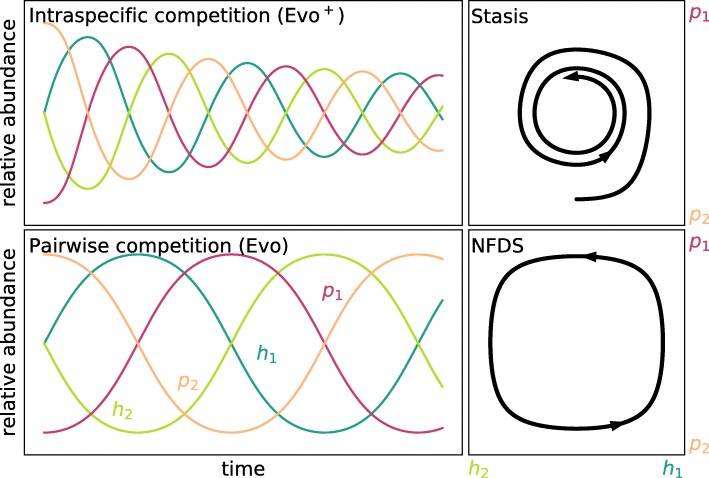Fig. 2.
Large population size limit. Relative abundances of two genotypes of host h1 and h2 and parasite p1 and p2 over time (left) and 2D representation (right) in the deterministic equivalents of the Evo + and Evo process with constant population size. Top: Intraspecific competition within the whole population (+) results in an attracting fixed point which is reached eventually and does not changed once reached, leading to stasis (also EcoEvo +). Bottom: Pairwise competition between individuals allows for a neutrally stable fixed point which neither attracts nor repulses the dynamics resulting in continuous co-evolution in the form of negative frequency-dependent selection dynamics (NFDS) around the internal fixed point (also EcoEvo). Method: integration of ordinary differential equations, the adjusted replicator dynamics (Evo +) and the replicator dynamics (Evo), which are the deterministic limits of the respective stochastic processes. Parameters: selection strength wH=wP=1, matching allele parameters α=1 and β=0

